After nearly two weeks of waiting around in Windhoek, I finally set off cycling again. The people I know who’ve travelled in Africa, as well as the blogs I’ve read, all went through East Africa. From here on, as I ride up toward West Africa, I’m less sure what to expect.
I rode out of the city on a road with, wonder of wonders, a usable cycle lane. Cones kept vehicles out of it while pedestrians walked on a separate pavement.
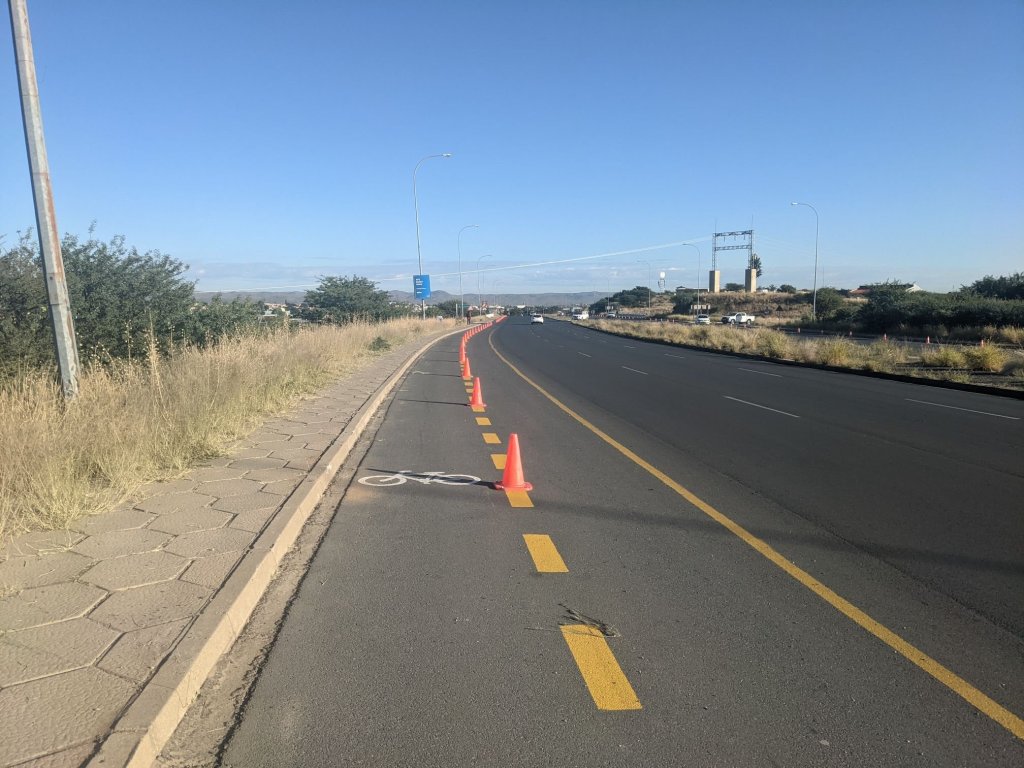
The road I left Windhoek on was initially a motorway – technically, anyway. There were still people walking along the shoulder though. It didn’t take long for traffic levels to reduce.
A couple of road cyclists caught up to me and I drafted them for a little while, until we reached a hill. I fell behind there and shortly later I saw them heading back on the other side of the road.
A headwind picked up around midmorning and my progress slowed as I rode on to the town of Okahandja. I stopped to collect water for the 170km gap to the next town. There are no shops or petrol stations during that stretch but there is a campsite halfway so water isn’t a concern.
The fairly strong headwind continued as I headed north. The road wasn’t empty, but considering this is Namibia’s primary road it wasn’t too bad.
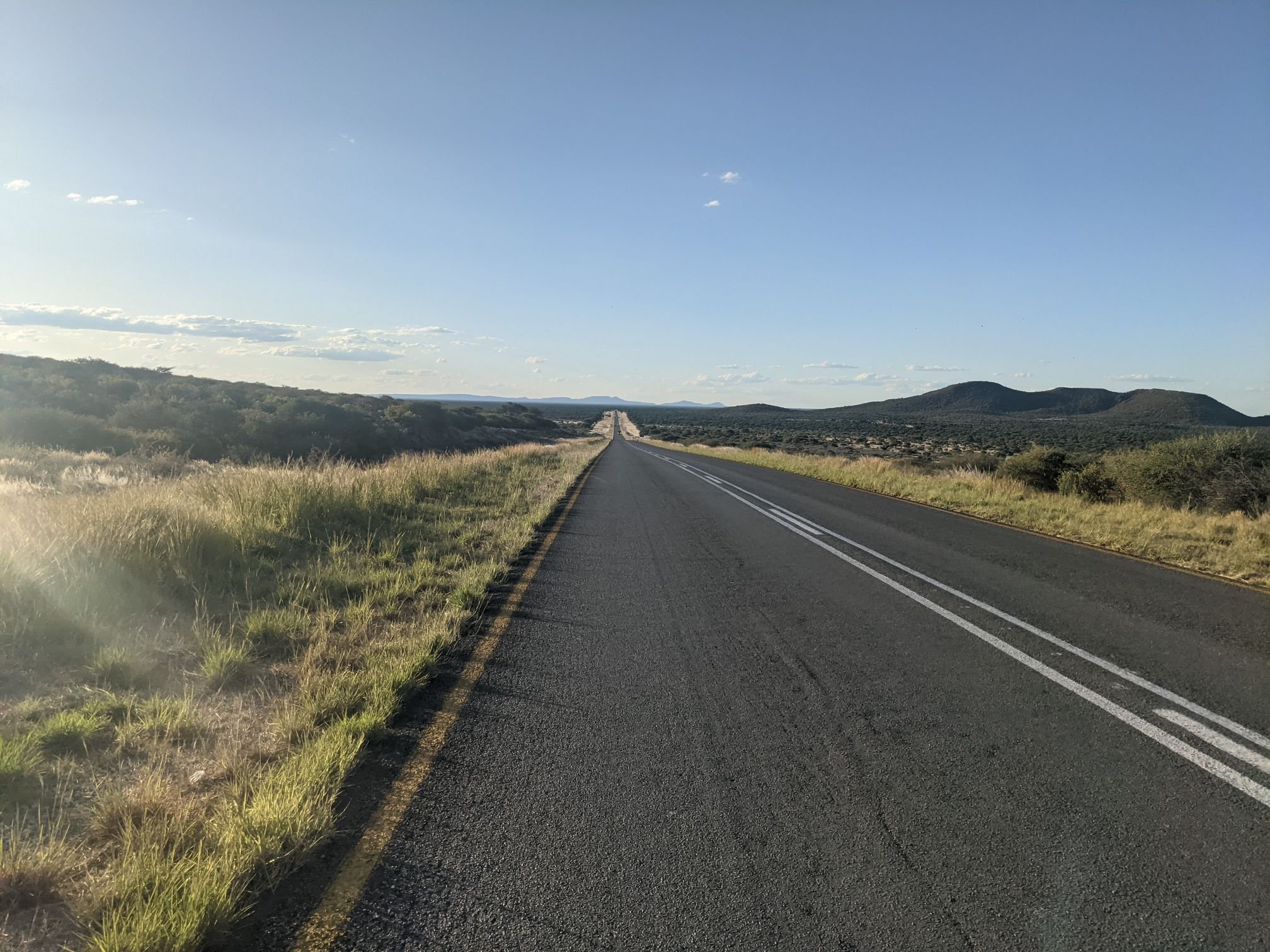
I find that my appetite lags a few days behind my activity levels. When I take a long break I have to be quite conscious of how much I eat, and I feel hungry for a few days. When I resume cycling, its difficult to eat as much as I need. I ate nowhere near the 6000 or so calories I probably burned.
In the evening I reached the campsite, and rode 500m or so down a sandy track. I set up my tent in a sheltered area – for protection from any wind in the night rather than any concern it might rain.
Shortly afterwards, two South African 4x4s arrived. Ryan, Marline, Carl and Anneka very kindly invited me to join them for braai – basically a South African barbeque. I ate quite a lot of very nice steak, putting a good dent in the day’s calorie deficit!
As I rode along the next morning, I was quite surprised when I looked to my side and saw some giraffes looking at me! I also saw some warthogs not long after, but didn’t manage to get a picture of those.
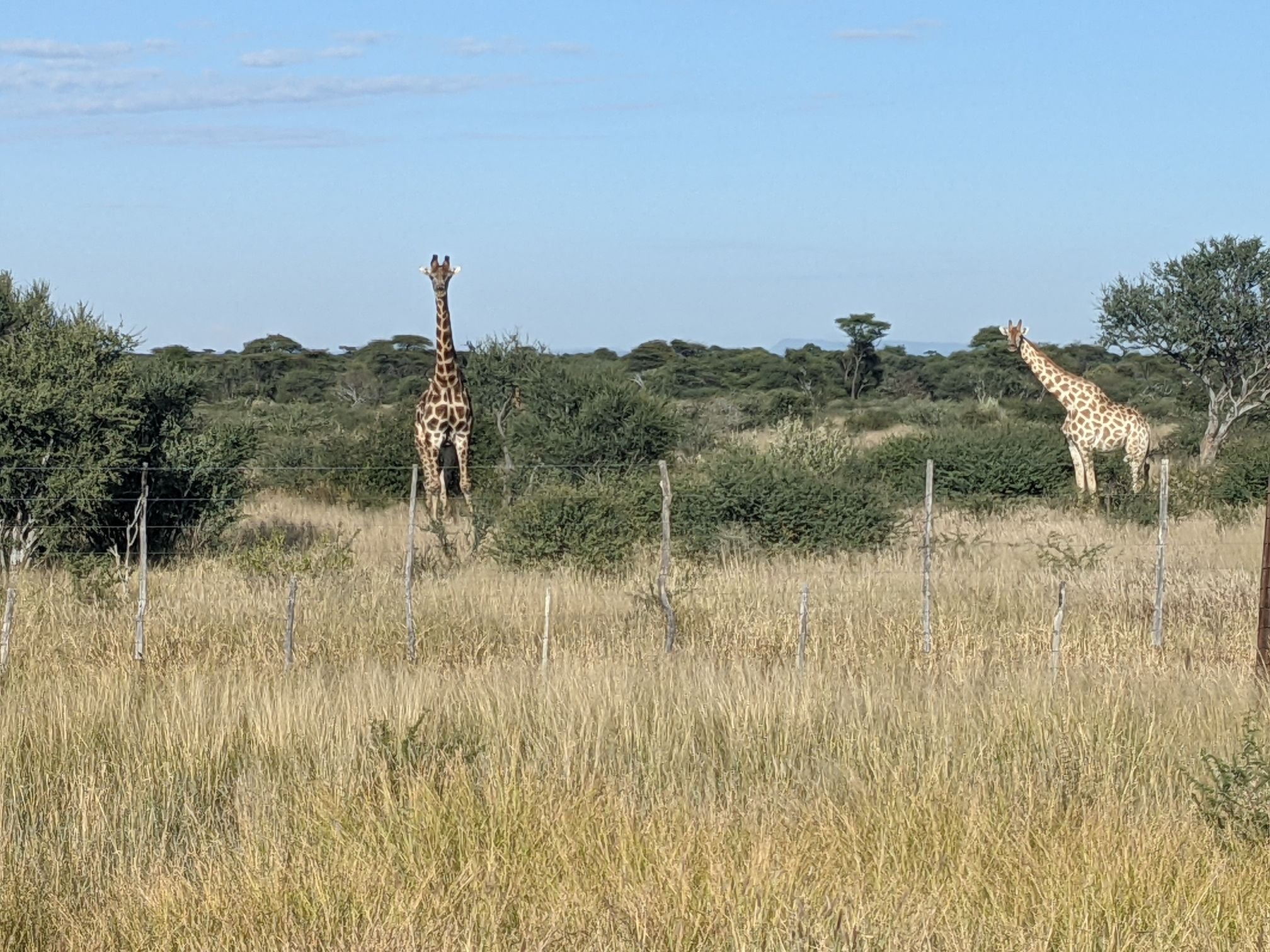
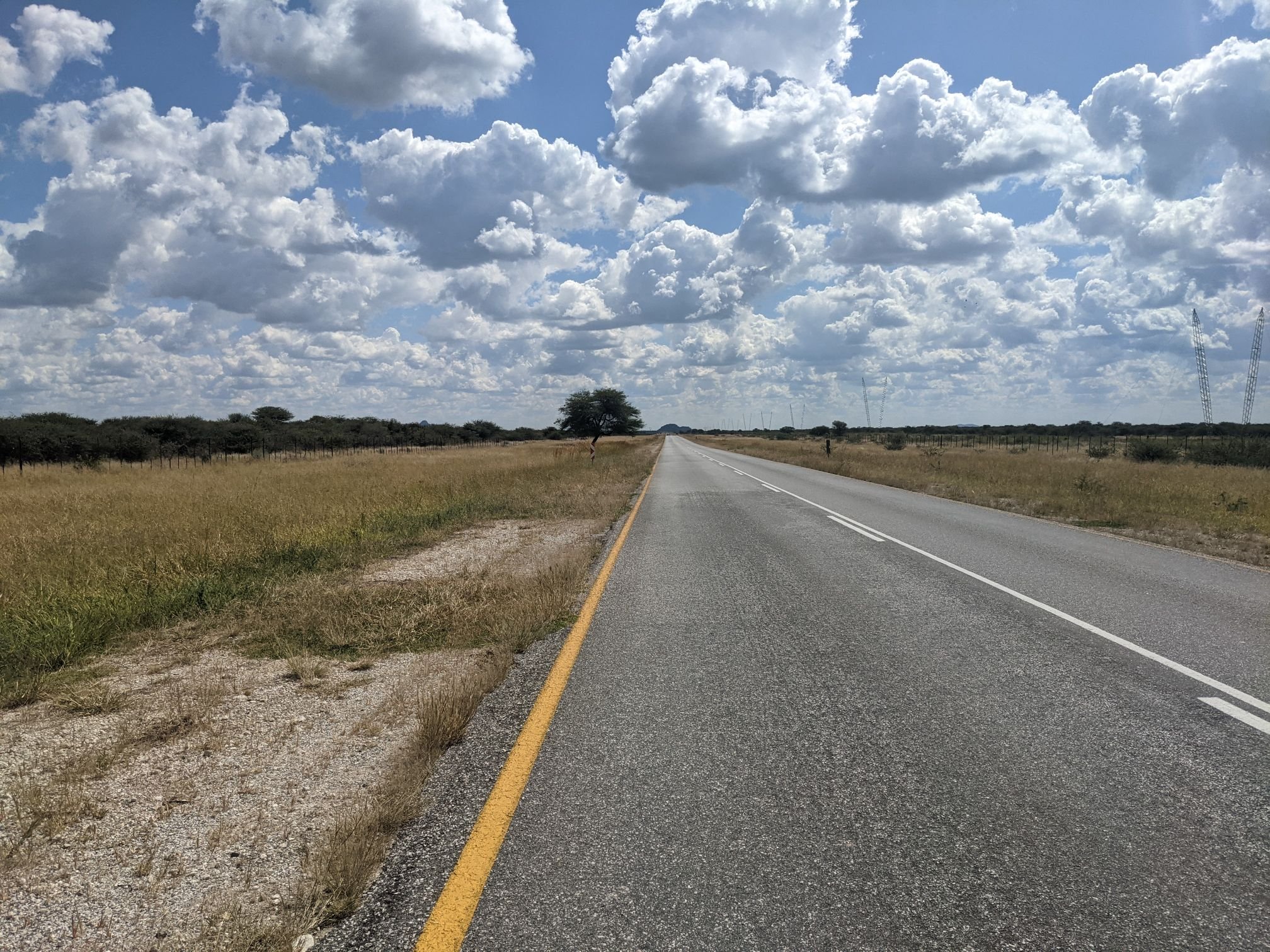
Other than that it was fairly uneventful riding. A headwind picked up again, so I rode slowly. I reached the town of Otjiwarongo in the early afternoon, and stopped at the supermarket – then decided to get some KFC as well.
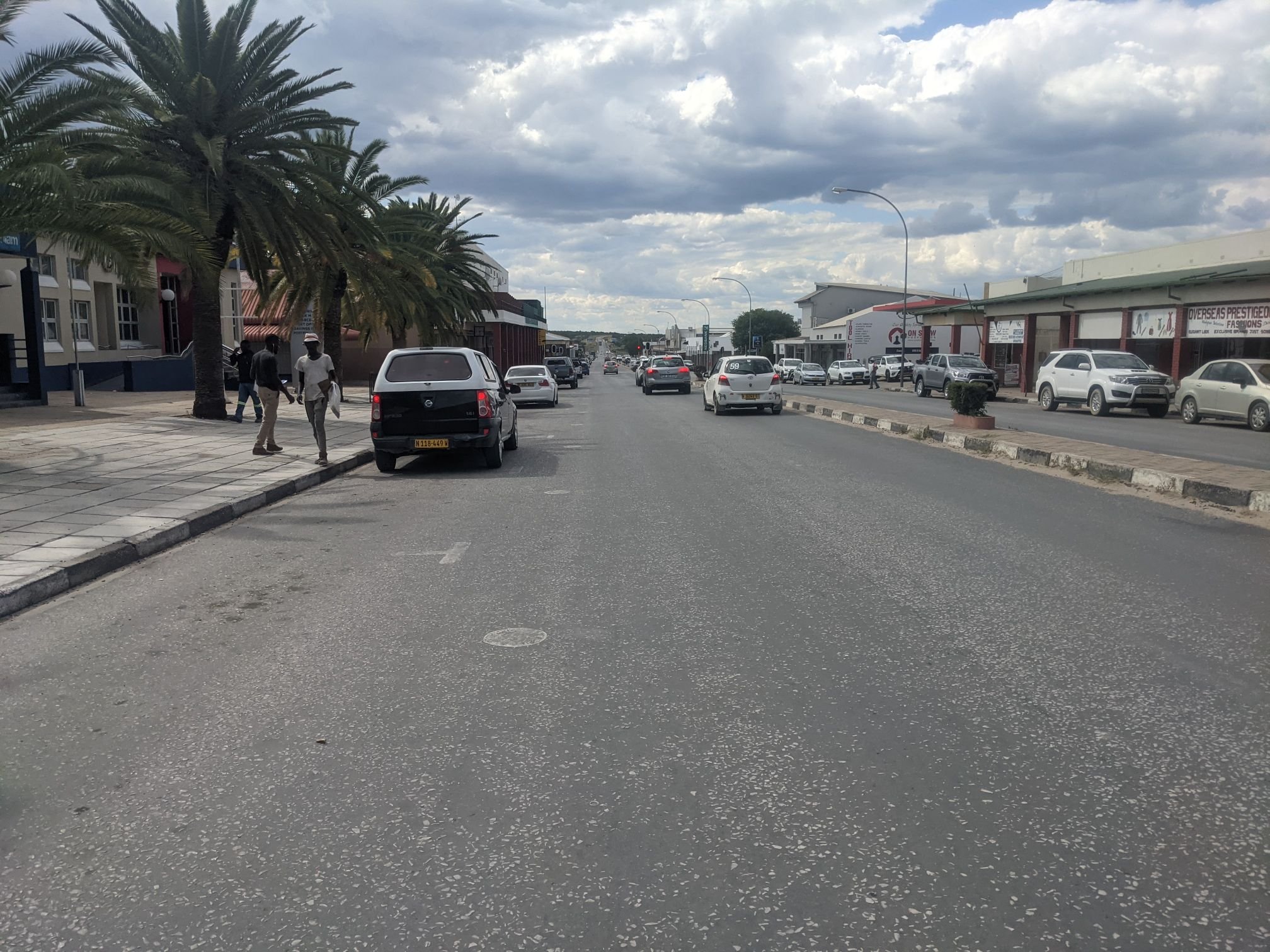
I rode on for a couple of hours before reaching a farm shop, where I stopped and bought some biltong – South African dried meat not dissimilar to jerky. I also filled up a water bottle before getting back to cycling.
Quite unusually for Namibia, there were lots of dark clouds. There were even a few drops of rain! In the distance it looked like there might be actual rainfall.
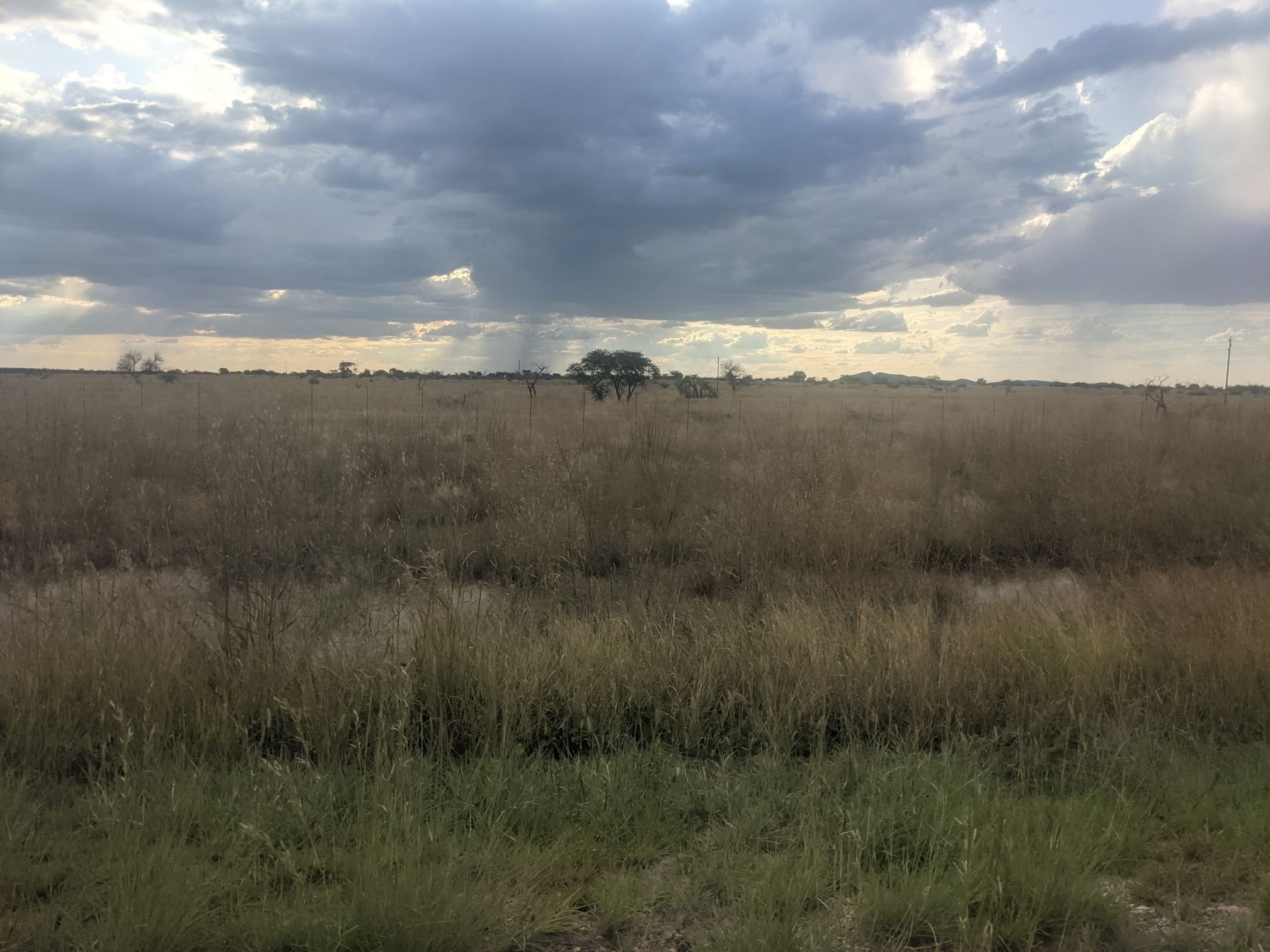
The roadsides were fenced, as usual, making it difficult to find a campsite. I looked down a couple side roads but they were fenced as well. I hopped down to a drain under the road, which turned out to have some sort of hive and lots of insects buzzing around. Later on, the road went nearer to a railroad running parallel and the fence was on the far side of the track. I picked up my bike and wandered over, setting up camp between the railway and the fence
There were a few drops of rain again in the night, and black clouds persisted in the morning. In places the road was wet where it had clearly been raining.

After an hour or two I reached a police checkpoint, where the officers gestured for me to stop. They told me that bicycles shouldn’t be on roads with cars, then that I should stick to the very edge of the road so cars could squeeze past me without having to move to the side.
I didn’t get the impression they were going to try and stop me, so there was no reason to argue the point. I made agreeable sounds then continued on as I had been. Encouraging vehicles to pass me with just a few centimetres space is not in fact a goal of mine. If drivers have to move slightly to the side, they are much more likely to move over further and leave a more appropriate gap. For those that pass stupidly close regardless, it’s much safer to have some room to move away from them.
The only eventful part of the rest of the day was a small range of hills. It was not a long climb by any stretch of the imagination, but this was the first time since Windhoek that I’d used my small chainring.


I stopped in the town of Tsumeb to go to a supermarket and stock up on water. I then continued on and the sun came out briefly, the only time it did so that day.
In the evening I camped the same way I had the previous night. I waited for a gap in the traffic then carried my bike over to the far side of the railway. I initially set it up as usual, with the rainfly. As I sat down outside I realised it was actually quite warm still, so I took the rainfly half-off. The clouds later dispersed and the temperature cooled, so I put it back on. It’s nice to have this modularity.

I slept in somewhat the next morning. When I finally got around to packing up, I found a visitor under my tent – a scorpion!
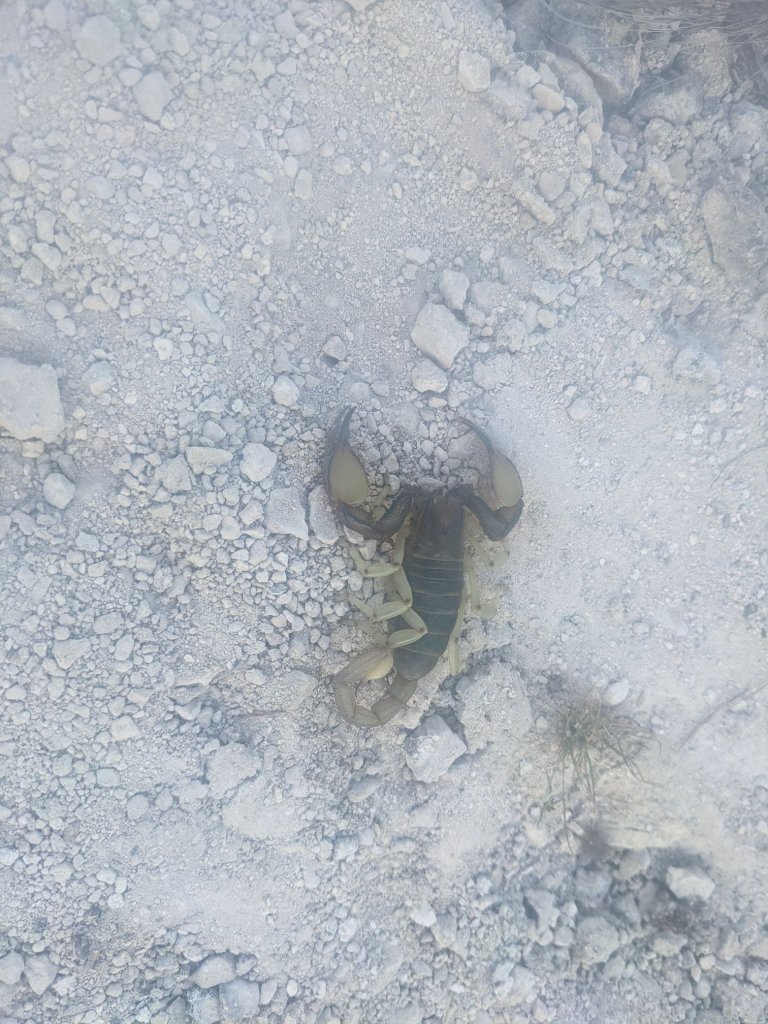
I set off cycling and soon passed another police checkpoint; this time I was not stopped. There was another, larger checkpoint at the entrance to the village of Oshivelo. This checkpoint marks the “Red Line.” During Apartheid blacks farmed north of the line, and whites to the south. This still applies to a significant extent. Nowadays the line is called the Veterinary Control Line, with Foot and Mouth Disease being it’s primary focus. Livestock from north of the line cannot be sold internationally, nor even to the rest of Namibia.
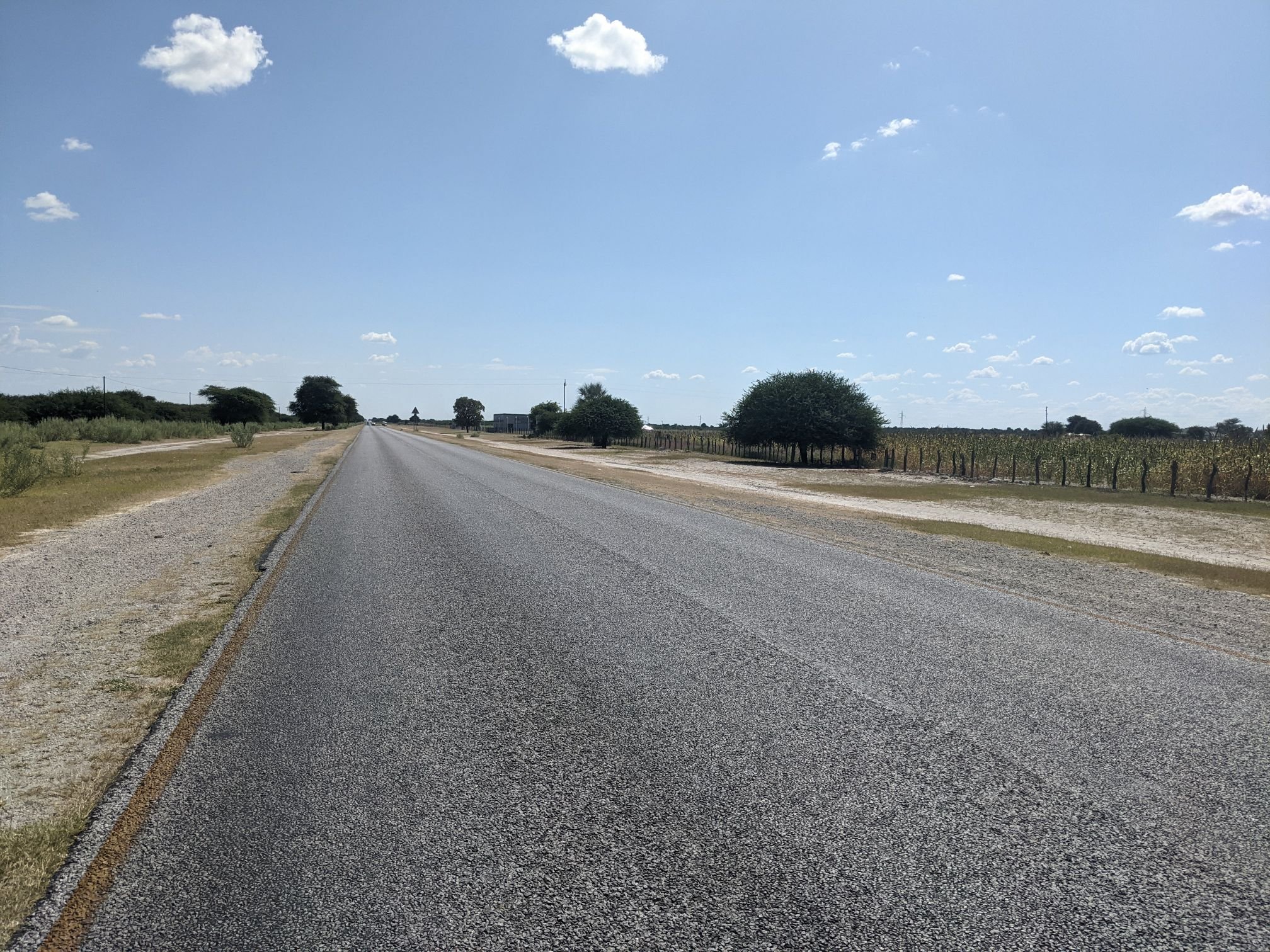
There was someone in the village holding out an empty water bottle, gesturing for me (and other passersby to stop. This is quite a common trick – they demand money if you stop. It seems rather more suspect here in a village – I stopped a couple hundred metres further on to fill up my own water bottles at a petrol station.
The area I rode through gradually became more populated. About 50% of Namibia’s population live in this northern region that comprises 6% of the area. There were animals grazing by the roadside, buildings, and the occasional crops growing.

Traffic increased too. The driving along this entire stretch from Windhoek has been pretty atrocious. I don’t understand why people seem to so hate the idea of moving a metre to the side, when they can see there are no cars ahead for the next kilometre. Instead it’s common to just lean on the horn and drive straight at me, forcing me off the road. The same goes for oncoming traffic overtaking – they just drive straight at me. It’s a kind of “might makes right” mentality and it’s rather maddening.
At one point I passed a water hole. This is the first time I’ve seen surface water since Windhoek, at least. Not even a stream for 500km.

I reached the town of Omuthiya, a larger settlement with several supermarkets. Apart from the areas around these supermarkets, this seemed like a town much more typical African (as opposed to South African) town. Buildings looked more basic, and instead of designated carparks, there was a wide space between the road and the shops, and people parked wherever.
This feeling of returning to Africa continued past the town. There seemed to be people everywhere – here a man watching his herd, there some kids playing, there a woman carrying a sack on her head. People called out greetings (I presume) to me as I passed; kids sometimes waved.. There were frequent houses and most of the land was being used, either for grazing, crops or buildings.
Naturally this makes wild camping difficult. Even if I could see somewhere where I’d be out of sight, I’d be watched on my way there. At one point I saw somewhere promising but, after looking around, I saw a man watching me, sitting in a tree. Eventually I found a moment where I wasn’t being watched, and followed a little-used track. I hopped over a fence into an overgrown area and pushed/carried my bike to a clear spot with relatively few ants. I set up my tent with the rainfly half-off again – this gives most of the airflow benefit, while being very quick to put on the rest of the way when temperatures drop.
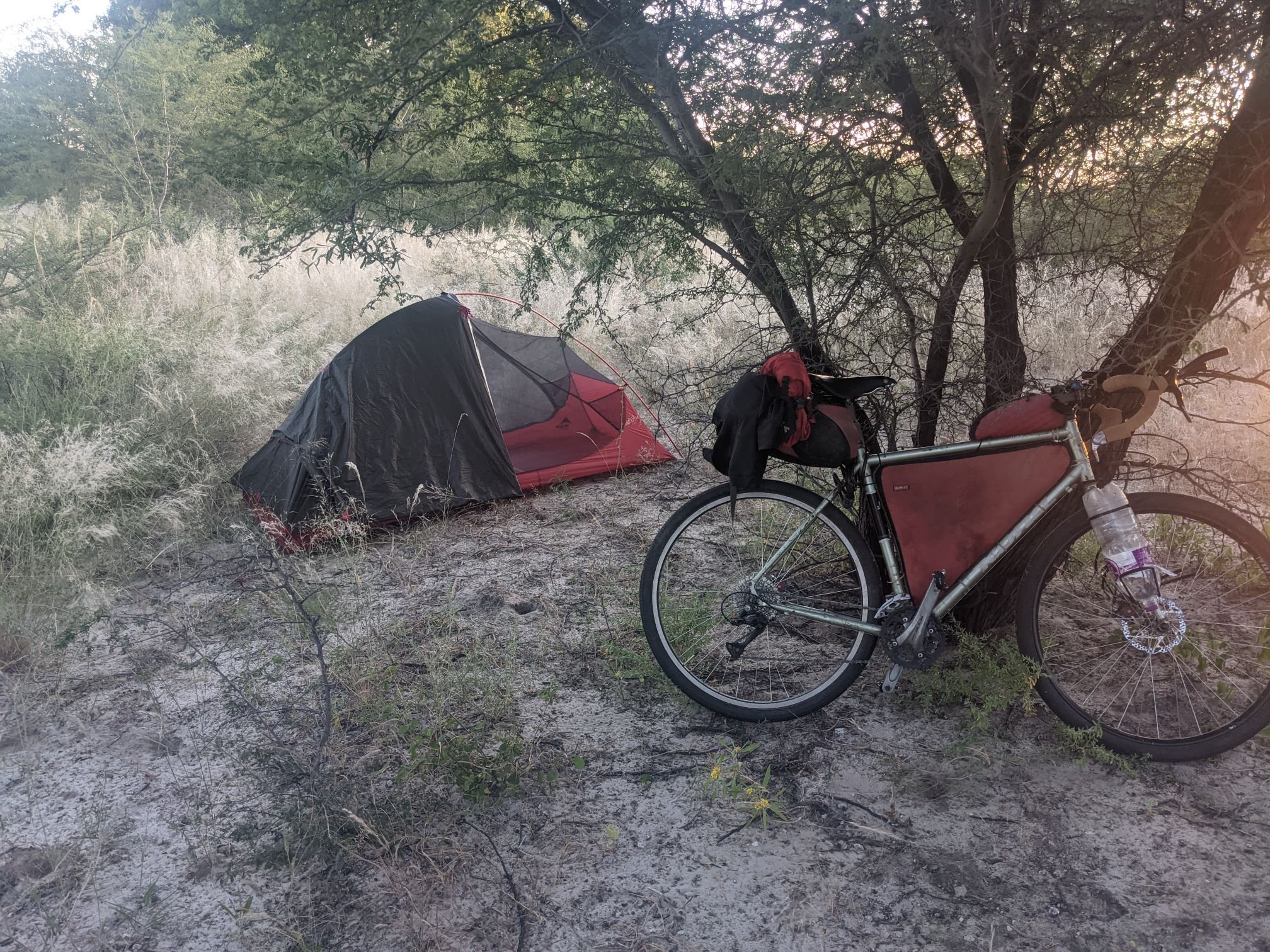

The next morning I just had a short day planned, though it was lengthened somewhat when I had to stop as I felt my rear tyre going flat. The cause was immediately apparent, a thorn about 3cm long. It was so long, in fact, that it had gone all the way through and punctured the inside of the tube as well. Two patches later, I was on my way.
I stopped in the town of Ongwediva, and went to a lab, where I needed to get a PCR test. It was a Sunday, so I was not particularly surprised to find it closed, despite the opening hours printed on the door. I went to a nearby guesthouse that offers camping.
The next day was International Workers Day, so they were closed as well. I asked at the nearby hospital, but they also didn’t offer non-urgent tests on public holidays. I was feeling a bit unwell so I was alright with the extra day off.
I returned to the lab on Tuesday, took the test, and returned an hour and a half later for my (negative) result. I still wasn’t feeling 100% so I spent the rest of the day lounging around.

Apr 27: 161 km
Apr 28: 141 km
Apr 29: 180 km
Apr 30: 152 km
May 1: 71 km
Hi Sam,
What a surprise to see that you mention us in your blog, thank you.
It was great meeting you and to have a barbecue together. Love to read your blog.
All the best, safe travels.
Carel, Anneke, Riaan and Malanie
LikeLiked by 1 person
Hey Carel
It was great to meet you too and thanks once again for sharing your food, I loved it. Sorry for the spellings of your names!
Sam
LikeLike